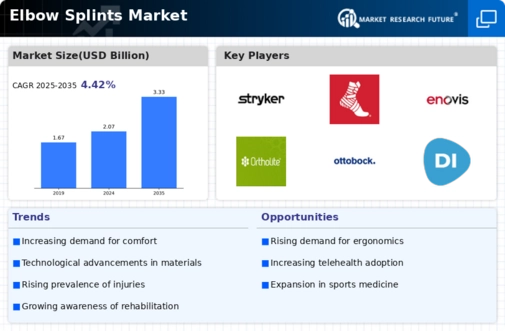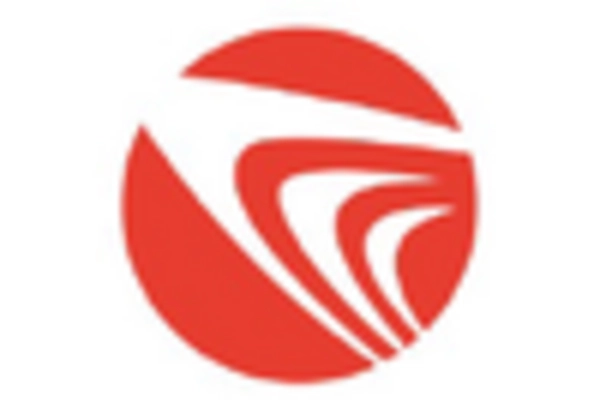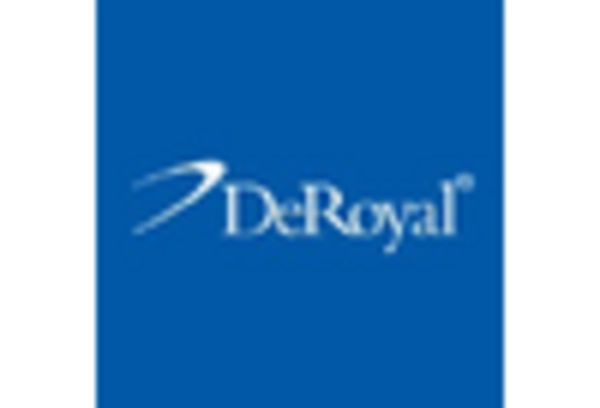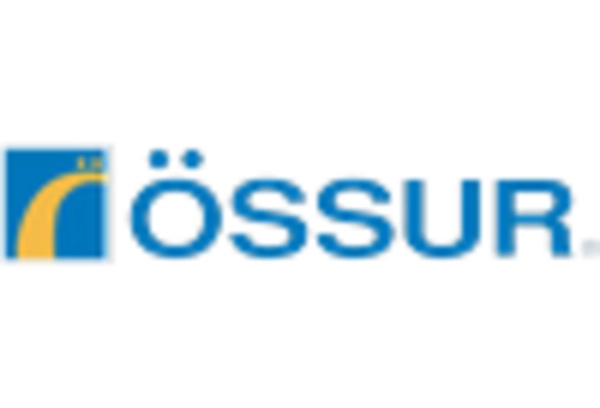Aging Population
The demographic shift towards an aging population is poised to have a profound impact on the Elbow Splints Market. As individuals age, they often experience a decline in musculoskeletal health, leading to a higher susceptibility to injuries and chronic conditions affecting the elbow. Reports suggest that the elderly population is more prone to conditions such as arthritis, which can necessitate the use of supportive devices like elbow splints. This demographic trend is likely to drive demand for elbow splints, as older adults seek solutions to maintain mobility and independence. Additionally, healthcare systems are increasingly focusing on geriatric care, further emphasizing the need for effective orthopedic solutions, thereby enhancing the market's growth potential.
Expansion of Distribution Channels
The expansion of distribution channels is playing a crucial role in shaping the Elbow Splints Market. The rise of e-commerce platforms has made it easier for consumers to access a wide range of elbow splint products from the comfort of their homes. This shift in purchasing behavior is likely to enhance market penetration, as online retailers offer competitive pricing and convenience. Furthermore, traditional retail channels are also adapting by incorporating more orthopedic products, including elbow splints, into their offerings. This diversification in distribution methods not only increases product availability but also raises consumer awareness about different options. As a result, the market is expected to benefit from this expansion, leading to increased sales and a broader consumer base.
Rising Incidence of Elbow Injuries
The increasing prevalence of elbow injuries, particularly among athletes and individuals engaged in physically demanding occupations, appears to be a primary driver for the Elbow Splints Market. Statistics indicate that sports-related injuries contribute significantly to the overall incidence of elbow issues, with conditions such as tennis elbow and golfer's elbow becoming more common. This trend is likely to escalate the demand for effective treatment solutions, including elbow splints. Furthermore, as awareness regarding the importance of early intervention grows, healthcare professionals are increasingly recommending the use of splints for rehabilitation. Consequently, this rising incidence of elbow injuries is expected to bolster the market, as consumers seek reliable products to aid in recovery and prevent further complications.
Increased Awareness of Preventive Healthcare
The growing emphasis on preventive healthcare is emerging as a significant driver for the Elbow Splints Market. As individuals become more health-conscious, there is a heightened awareness of the importance of injury prevention and management. This trend is reflected in the increasing number of fitness enthusiasts and athletes who proactively seek out elbow splints to prevent injuries during physical activities. Additionally, educational campaigns by healthcare providers regarding the benefits of using splints for both prevention and rehabilitation are likely to contribute to market growth. The proactive approach to health management is expected to create a robust demand for elbow splints, as consumers recognize their value in maintaining joint health and preventing long-term complications.
Technological Advancements in Product Design
Innovations in product design and materials are significantly influencing the Elbow Splints Market. The introduction of lightweight, breathable materials and ergonomic designs enhances user comfort and compliance, which is crucial for effective treatment. Recent advancements have led to the development of splints that offer better support while allowing for greater range of motion, appealing to both athletes and individuals recovering from injuries. Moreover, the integration of smart technology, such as sensors that monitor recovery progress, is gaining traction. These advancements not only improve the functionality of elbow splints but also attract a broader consumer base, thereby potentially increasing market share. As manufacturers continue to innovate, the market is likely to experience sustained growth driven by consumer demand for high-quality, technologically advanced products.


















Leave a Comment